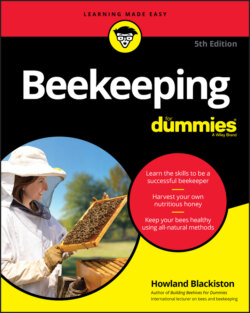Читать книгу Beekeeping For Dummies - Howland Blackiston - Страница 95
Understanding the correlation between geographical area and honey flavors
ОглавлениеThe type of honey you eat usually is distinguished by the primary floral sources from which the bees gathered the nectar. A colony hived in the midst of a huge orange grove collects nectar from the orange blossoms — thus the bees make orange-blossom honey. Bees in a field of clover make clover honey and so on. As many different kinds of honey can exist as there are flowers that bloom. The list gets long.
For most hobbyists, the flavor of honey your bees harvest depends on the dominant floral sources in their area. During the course of a season, your bees visit many different floral sources. They bring in many different kinds of nectar. The resulting honey, therefore, can properly be classified as wildflower honey, a natural blend of various floral sources.
The beekeeper who is determined to harvest a particular kind of honey (clover, blueberry, apple blossom, sage, tupelo, buckwheat, and so on) needs to locate his or her colony in the midst of acres of this preferred source and must harvest the honey as soon as that desired bloom is over. But doing so is not practical for the backyard beekeeper. Leave it to the professional migratory beekeepers.
City bees gather a particularly complex plethora of nectars while foraging. That’s because most flora planted in urban settings is not native and immensely varied. This results in a delicious blend of nectars (and thus a delectable honey) that is not found anywhere else on earth. And you will be amazed how it may vary from one year to the next.
My advice? Let the bees do their thing and collect from myriad nectar sources. You’ll not be disappointed in the resulting harvest, because it will be unique to your neighborhood and better than anything you have ever tasted from the supermarket. Guaranteed!
For a lot more information on honey varietals, see Chapter 15.
